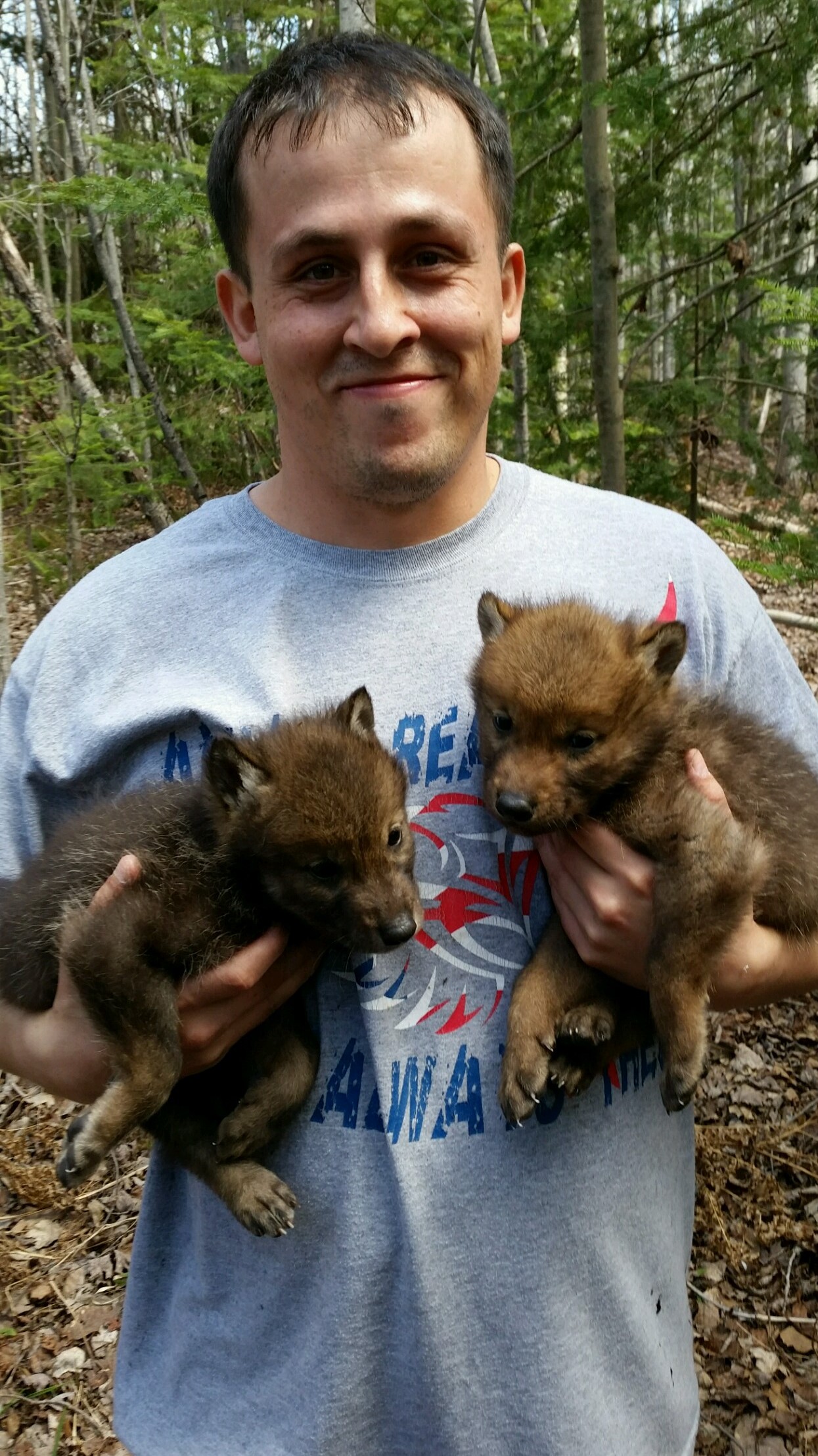
- Donate
- Watch
-
-
-
Explore Online
-
-
PBS
 Passport
PassportSupport PBS Wisconsin and gain extended access to many of your favorite PBS shows & films.
-
- TV Schedule
- News
- Education
- Support Us
-

Ma’iingan: Brother Wolf premieres 7 p.m. Monday, March 4, 2019. In this new documentary, Jeremy St. Arnold, a wildlife biologist for the Red Cliff Band of Lake Superior Chippewa, shares how his work unites both tribal and scientific perspectives.
 With insight from Ojibwe elders, biologists and artist Rabbett Before Horses Strickland, this new film captures enduring spiritual connections with ma’iingan (Brother Wolf), the lasting bonds and responsibilities shared between native people and the wolf species, and the opportunities and challenges presented by the protection of the animals across reservation lands.
With insight from Ojibwe elders, biologists and artist Rabbett Before Horses Strickland, this new film captures enduring spiritual connections with ma’iingan (Brother Wolf), the lasting bonds and responsibilities shared between native people and the wolf species, and the opportunities and challenges presented by the protection of the animals across reservation lands.
“This was a very memorable experience for me,” says St. Arnold. “I have always enjoyed documentaries, and I felt fortunate to be able to represent the Red Cliff Band, sharing the work I love to do.”
Read on to learn more about how tribal traditions and scientific research unite in service of Brother Wolf.
Jeremy St. Arnold’s family, originally from the Keewenaw Bay Indian Community (KBIC), didn’t emphasize Native American culture during his childhood. Growing up in Washburn, on the shore of Lake Superior, he didn’t learn about traditions and cultural aspects surrounding ma’iingan (the wolf).
“I knew that certain animals were revered for various reasons,” he says, “but I had yet to learn any of the traditional knowledge until I started working for Red Cliff.”
In those days, wolves weren’t as prevalent on the landscape; during his adolescence, he didn’t see a single wolf, and rarely heard community discussion about them.
“I always wanted to see wolves and hoped I would, but they proved to be very elusive and continue to do so,” he says. “Times sure have changed.”
How do Ojibwe and non-Native people view wolves differently?
Many Anishinaabe [“first or original man”] view the wolf as their brother, and believe that what happens to wolves will also happen to the Anishinaabe people: they are forever destined to walk linked paths.
Due to this cultural significance, the Red Cliff Band of Lake Superior Chippewa view ma’iingan as a tribally important species; they have officially declared wolves a protected species within the exterior boundary of the Red Cliff reservation.
The DNR is in a different position. They are required, by law, to recognize wolves as a game species and institute a harvest season as soon as they lose federal Endangered Species Act protection.
Many tribes, including Red Cliff, do not feel that a harvest season on wolves is ecologically or culturally appropriate. Ultimately, Red Cliff would like to see wolves forever be a non-game species. However, if they are to be a harvested species, there should be additional protections in place for packs that utilize Reservation lands, in the form of a buffer zone.
For example, based on the most recent territory data, there would need to be at least a nine-mile buffer to protect the Echo Valley Pack, which typically dens on the Reservation. That particular pack has a territory that at times exceeds 100 square miles, requiring a large buffer zone.
Tribal natural resources programs are often a blend of western science, traditional ecological knowledge (TEK) and cultural aspects, which is quite a different approach from county, state and federal agencies.
EDITOR’S NOTE: St. Arnold had a key role in creating the Red Cliff Wolf Protection Plan, introduced in 2015. Read the plan here and watch him speak about the plan here.
How does that play into your everyday work?
The cultural status of ma’iingan comes into play in several ways.
What do you hope viewers understand about wolves, the Ojibwe way of life and living in balance with nature?
Wolves are not to be feared, but rather respected. They are not decimating deer herds; they are highly adaptable and adjust to different availabilities of prey and foraging opportunities throughout the year. Wolves have been documented foraging for berries, fishing, hunting a wide variety of large and small game, and also scavenging.
I would like people to know that wolves aren’t killing machines that kill for fun. We have seen time and time again that wolves are extremely efficient and utilize the vast majority of every carcass, unless disturbed – more so than many hunters.
I hope viewers understand why the Anishinaabe people have such a deep spiritual connection to ma’iinganag: why they have such a deep level of respect and appreciation.
Wolves are quite similar to people. They aren’t evil but they aren’t perfect; they are simply trying to survive and raise their families.
I would love to get your thoughts, suggestions, and questions in the comments below. Thanks for sharing!
Dan
A natural wolf population will keep the coyotes in balance too. They can be more trouble over all.
Marguerite and Steve Rohde
Thank you for this short article re: this educational program about the wolf. My family and I are very much looking forward to watching this program when it airs on WPT March 4th. We we are interested learning more about nature, protecting our precious environment and about native traditions. I will be sure let more people about this upcoming program.